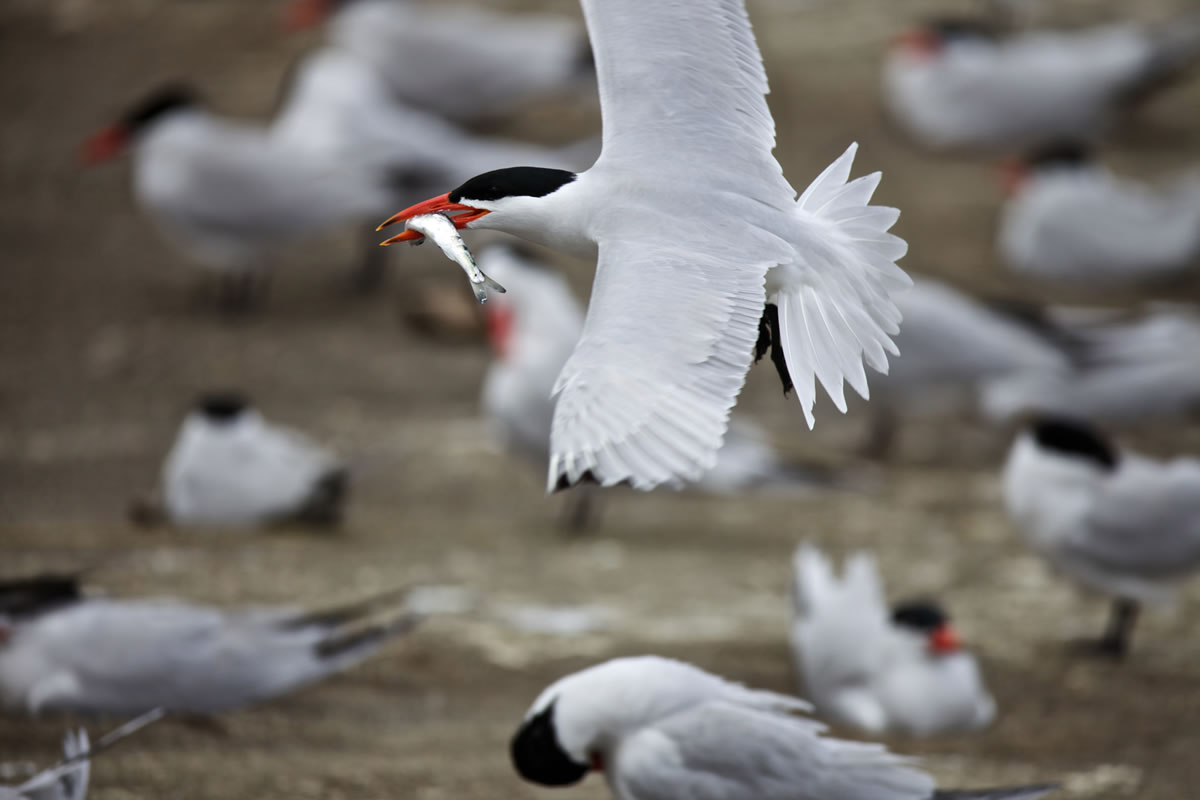GRANTS PASS, Ore. — The U.S. Army Corps of Engineers said Monday it will not continue killing gulls that have been eating baby Caspian terns at the West Coast’s largest nesting colony, located at the mouth of the Columbia River.
The corps issued an environmental assessment to decide whether the continued failure of the tern colony on East Sand Island to produce young due to predation by the gulls would drive the terns to return to another island upstream, where they consumed millions of baby salmon.
The corps concluded that new research indicates the terns are not likely to move the colony, so no action is needed. In recent years, eagles flying overhead have scared the terns into flying off their nests, allowing gulls to move in and eat the eggs and young left behind.
Federal agencies became concerned that the terns would return to Rice Island if they continued to fail to produce new young.
The assessment looked at shooting up to 150 gulls to keep them from eating baby terns. The corps started shooting gulls last year under a permit to kill up to 50 granted by U.S. Fish and Wildlife Service.
Bob Salinger of Portland Audubon said the situation points out how complicated it is getting to protect salmon from natural predators, when the real problem is the dams on the Columbia.
“What we are seeing is a wider and wider net being cast to manipulate a variety of species — cormorants, gulls, Caspian terns, sea lions — natural predators that have coexisted for millennia with salmon,” Salinger said. “In the meantime, we don’t feel the core reasons for salmon declining have been adequately addressed by the corps — the dams.”
Meanwhile, the corps and other federal agencies charged with protecting salmon in the Columbia continue to look for ways to make their strategy for controlling tern predation on salmon, said corps spokeswoman Diana Fredlund.
The terns had nested farther upriver on Rice Island, made of left-over sand from dredging operations, where they consumed millions of baby salmon migrating to the ocean. Federal agencies forced the terns to relocate closer to the Columbia’s mouth, where the birds eat fewer salmon because they are mixed in with other species of ocean fish.



